
Data-driven HR
Struggling to turn HR data into stories that impress leadership? Our content hub has the answers. 📈
Explore our content hubHR KPIs: 10+ KPI Examples for Human Resources
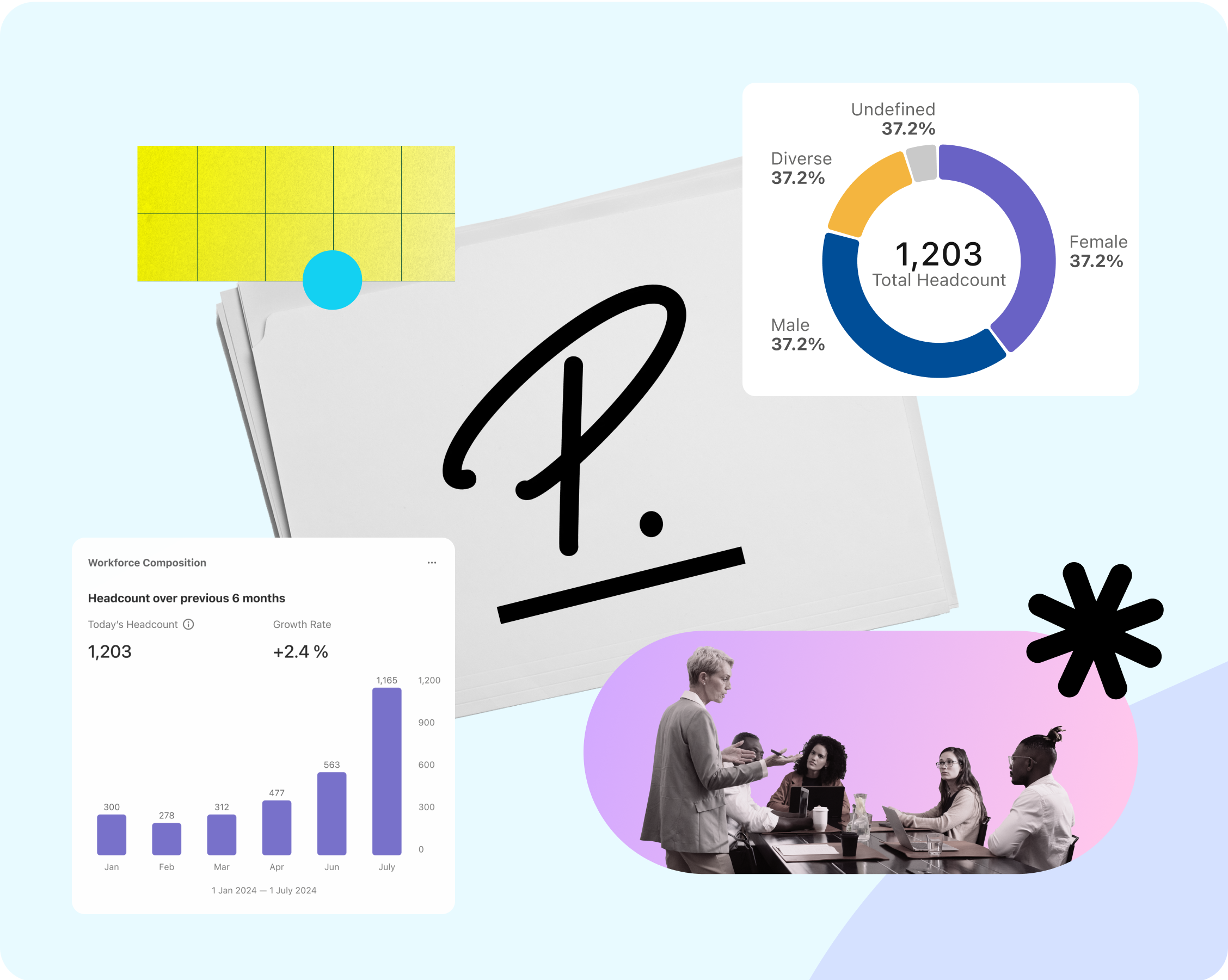
Your HR strategy should help your company to meet its organisational goals. This means setting targets that are aligned with the company’s overall strategy and consistently measuring progress.
To determine how successfully your HR efforts are moving the company forward, you need to set key performance indicators, or KPIs. In this article, we’ll discuss HR KPIs in detail, including the characteristics of strong HR KPIs and a list of metrics you could use to develop them.
Download nowWhat is a KPI?
A key performance indicator (KPI) is a quantifiable measure of performance that a company tracks over time. KPIs act as targets that organisations use to determine whether they are meeting their core goals.
What are HR KPIs?
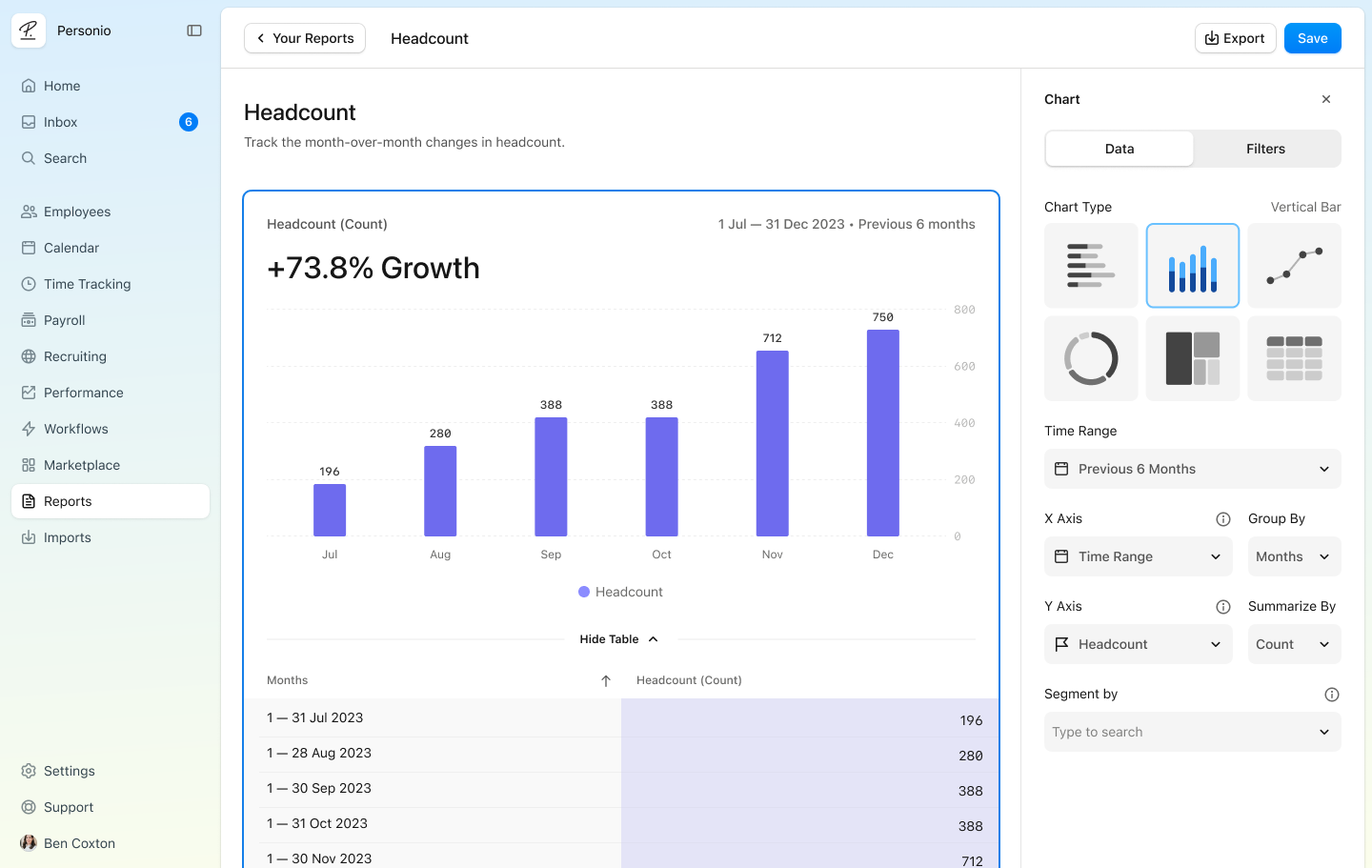
HR KPIs are key performance indicators based on HR metrics, which HR teams use to track how successfully they are helping their organisation to realise its strategy. For example, a company that needs to cut costs might introduce an HR KPI of keeping cost-per-hire (CPH) below £1000. While this is a function of the HR team, it’s also tied to the organisation’s need to reduce spending and become more efficient.
Characteristics of strong HR KPIs
A strong HR KPI should be:
Concrete: The KPI should be tangible and involve meeting a specific goal.
Measurable: HR KPIs should be quantifiable so that it’s easy to see whether or not you have achieved them. This also helps you to track progress over time.
Realistic: KPIs should be ambitious but realistic. Setting KPIs you don’t have a real chance of achieving can leave employees feeling disheartened or disengaged.
Simple: If employees don’t fully understand their goals, they can’t effectively work towards them. HR KPIs should be easy for everyone involved to understand.
Correlated: HR KPIs shouldn’t contradict each other. For example, it would be difficult to both reduce recruitment costs and significantly increase headcount at the same time, so it’s not a good idea to have both of these as KPIs.
Aligned: Lastly, HR KPIs should be aligned with the company’s strategy. An HR KPI should act as an objective measure of how successfully your HR team is moving the company towards its goals.
10+ KPIs for human resources
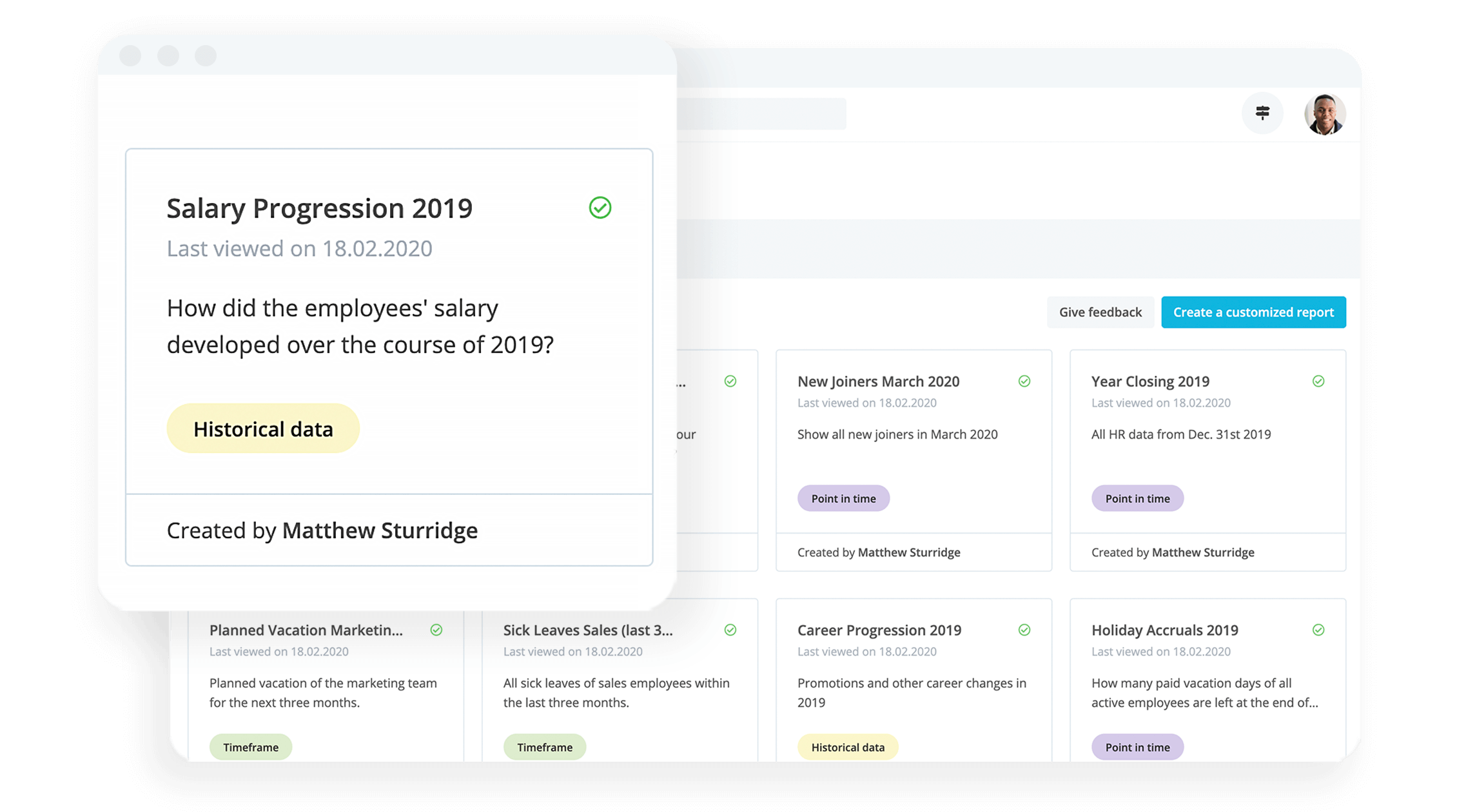
Here are some of the top metrics you might want to focus on when setting your HR KPIs, broken down into key areas of HR strategy:
Recruitment
Every company wants to make its recruitment processes as streamlined, efficient and cost-effective as possible. Here are some key metrics you could track to help improve your strategy in this area:
Cost-per-hire (CPH): This is how much it costs, on average, for you to hire each new employee. You can calculate CPH by taking the total amount spent on recruitment and hiring costs in a given period and dividing it by the total number of hires made.
Time-to-hire (T2H): Time-to-hire is the time between when a candidate begins the recruitment process and when they accept a job offer. It’s an important metric to track to keep an eye on efficiency in your processes.
Time-to-fill: Like T2H, tracking time-to-fill can help you spot any problems with your hiring processes. The difference is that it encompasses the total time from when a job request is made internally to when a candidate accepts an offer.
Example KPIs
T2H of 30 days or less
CPH of £1000 or less
Turnover and retention
Improving employee retention is a crucial focus for HR teams since high turnover can result in increased recruitment and onboarding costs. Here are some KPIs to track to ensure you’re meeting your goals:
Turnover rate: Your staff turnover rate is the percentage of employees that leave your organisation over a given period. You can break this down further into involuntary (employer-led) and voluntary (employee-led) turnover.
Retention rate: Your employee retention rate is the number of employees who were employed at the beginning of a given period and are still employed at the end. It doesn’t include new employees who were hired during the period in question.
90-day quit rate: Setting a benchmark for the number of employees that quit within the first 90 days (or 365 days) keeps you focused on ensuring those new employees have the best possible onboarding experience — making them more likely to stick around.
Example KPIs
90-day quit rate of 10% or below
Retention rate of 85% or above
Productivity and cost-savings
Cutting costs and increasing efficiency to maximise profit is a key part of many companies’ strategies. Here are some KPIs that you might want to set from an HR perspective:
Productivity rating: Tracking productivity can help to ensure your employees are doing their best work. Finding a productivity metric that can be expressed as a numerical value is important to ensure it is measurable and concrete. For example, you might set a KPI based on the number of support tickets closed by your customer support department.
Quality of hire: Quality of hire is a measure of how effective an HR team is at sourcing and selecting candidates. You can set a KPI based on the number of employees who get a positive rating from their manager during a performance review. Ensuring quality of hire remains consistently high allows companies to achieve their goals.
Example KPIs
80% or more new hires with a positive rating on their first annual review
Daily average of 50 or more tickets closed by support team
The People Manual: HR Analytics & KPIs
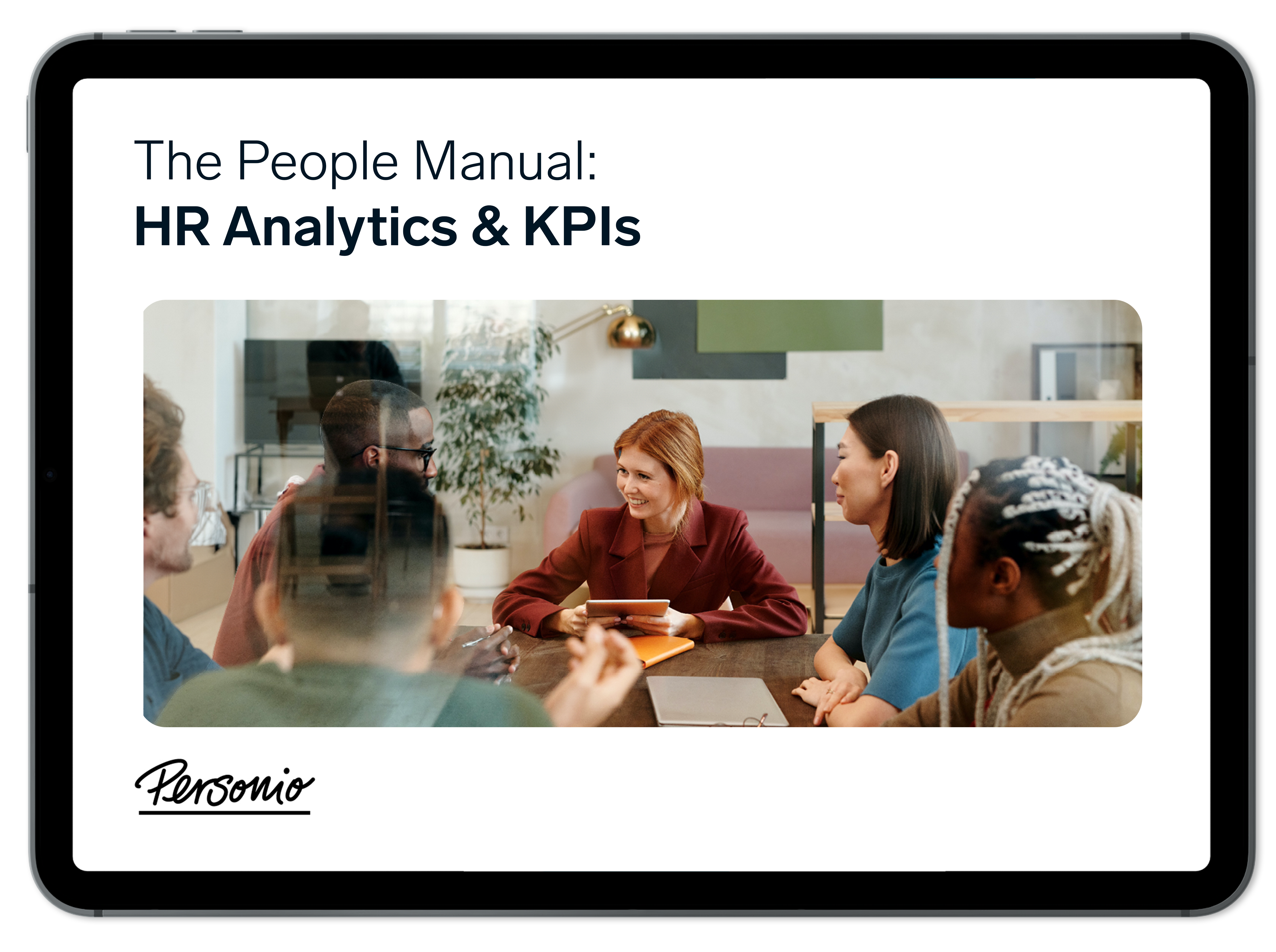
Over half a decade of collected insights on everything related to the KPIs that drive success in HR. Grab your free copy right now.
Download your copy todayEngagement and satisfaction
Engaged, happy employees tend to stick around longer, which is better for a company’s bottom line. A data-driven approach in this area can help you spot problems quickly and make improvements where needed. Here are some HR KPIs you could use to ensure strong performance:
Employee satisfaction index: Employee satisfaction is a simple metric you can track by sending regular engagement surveys to your workforce. Ensuring your employee satisfaction index stays above a certain level is important since dissatisfaction can be a significant driver of turnover.
Absenteeism: Absenteeism is a big sign that something is going wrong with your workforce in terms of satisfaction or engagement. You can calculate your organisation’s rate of absenteeism by dividing an employee’s total number of working days by the days they were absent — or use the Bradford factor to get a more accurate picture.
eNPS:Employee Net Promoter Score (eNPS) measures how likely your employees are to recommend your workplace to their friends or family. It can give you a good indication of employee satisfaction and could be a good basis for an HR KPI.
Example KPIs:
Bradford factor score of 50 or below across the organisation
eNPS of 75 or above
Diversity and inclusion:
Diversity and inclusion are increasingly important to today’s workforce. Here are some KPIs to set to ensure your company is as inclusive and supportive as possible:
Gender pay gap: You can work out the pay gap between two different groups by taking the average salary for each group and then figuring out the percentage difference between the two. Setting a KPI can help you to close the gap over time.
Gender diversity: Gender diversity is best expressed as a ratio. For example, if your workforce includes 200 men and 50 women, that could be expressed as a ratio of 4:1. You might then set a KPI of increasing this to a ratio of 2:1 within two years.
Example KPIs:
Gender pay gap of 10% or below
Male:female ratio of no more than 2:1
HR KPI examples in organisations
Imagine an organisation that needs to innovate within a competitive landscape. The company’s HR department might focus on two key KPIs to help the company achieve its goals:
Quality of hire
Retention rate
The company chooses to measure quality of hire since they know landing the best talent gives them the best chance of innovating. They base their target on the percentage of employees who receive an excellent rating from their manager in their annual review. The company’s current rate is 75%, and they set an ambitious target of 90%. They might achieve this by offering targeted, tailored training programs to any employees who receive a lower score.
The company also wants to focus on retention since recruiting new employees is expensive. The company is fairly happy with its current retention rate year-on-year of 80%. However, by establishing a KPI of keeping this rate at 80% or above, the HR team can ensure they quickly become aware of any problems affecting retention.
The HR team’s KPIs could be expressed as follows:
Business goal | KPI | Current rate | Target |
|---|---|---|---|
Increasing chances of innovation | Percentage of employees receiving an excellent rating in annual review | 70% | 90% |
Reducing staff turnover | Retention rate as a percentage of workforce over 12 months | 80% | >80% |
Software for tracking HR's most important KPIs
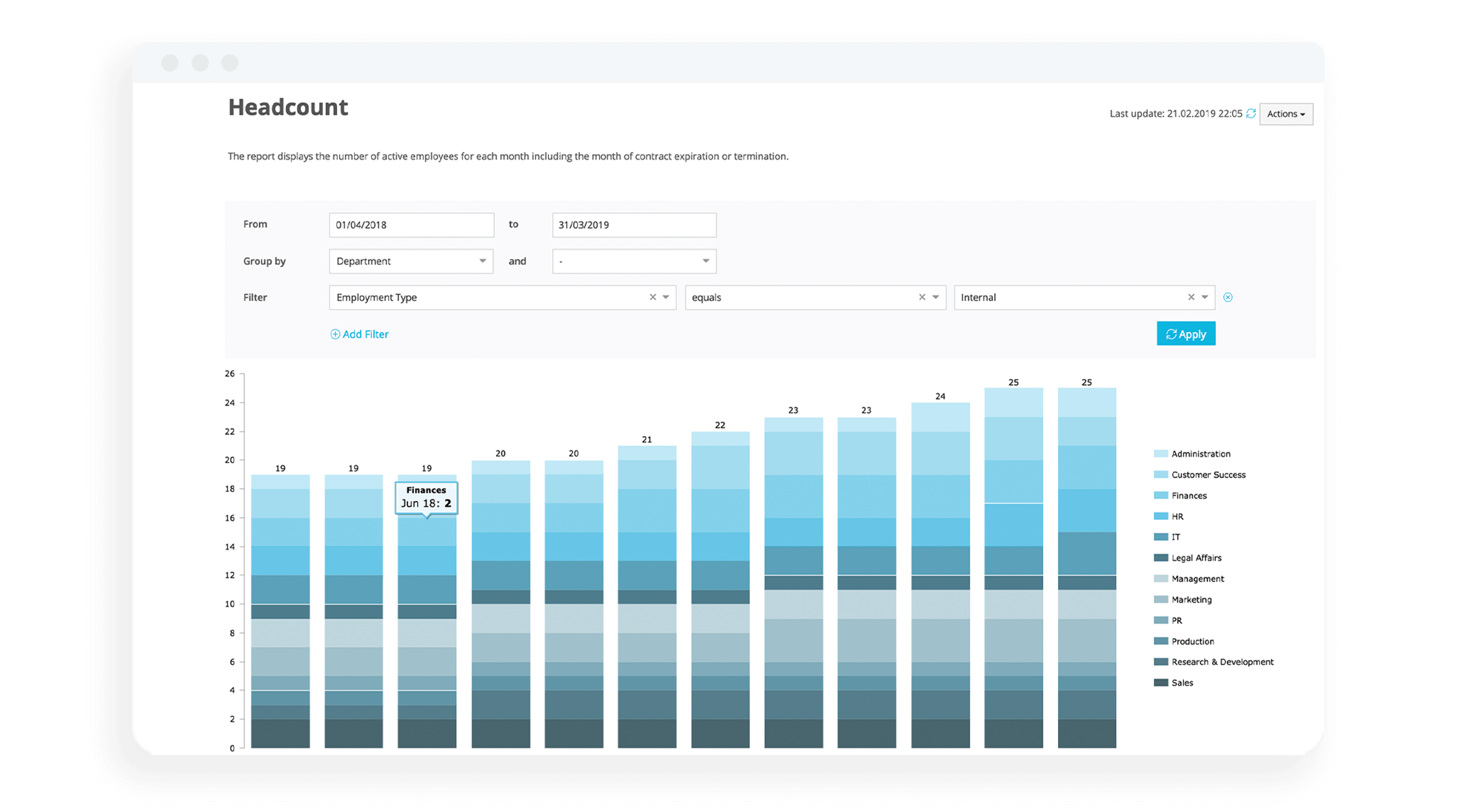
There are various different software solutions that allow you to set, track and manage KPIs for your HR goals. Some are specifically designed to measure your business performance, while others come with different HR functions built in as well.
Personio, for example, is an all-in-one HR software that includes reporting and metrics as just one piece of a much larger puzzle that lets you run strategic HR operations across your organisation.
Never worry about reporting again with Personio
Personio’s HR analytics software in 60 seconds

We need your consent to load this service!
This content is not permitted to load due to trackers that are not disclosed to the visitor.
Track absences, keep on top of diversity metrics, access employee data and create templates for all HR documents to simplify your processes.
Book your free demo to see how Personio eases your top HR headaches.
